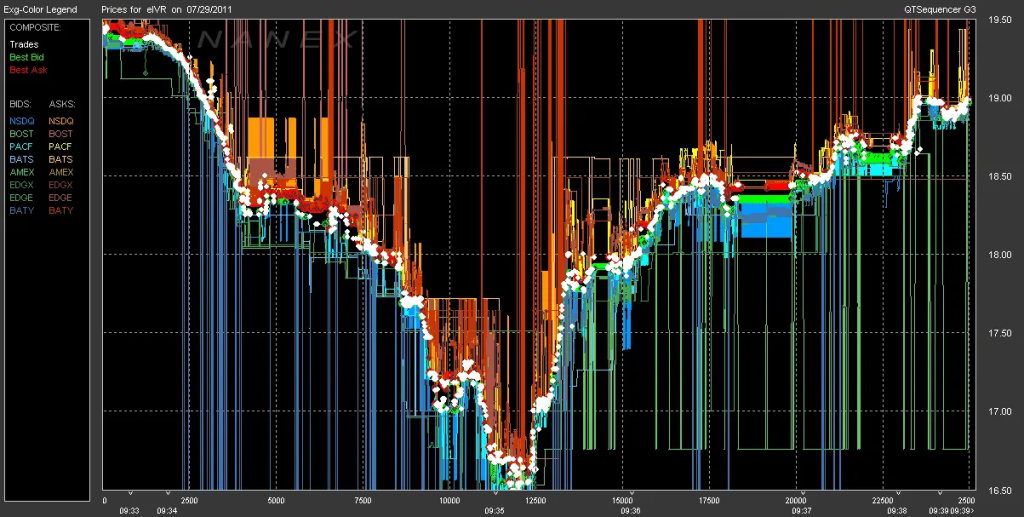
In the fast-paced world of high-frequency trading (HFT), where every millisecond counts, the choice of brokerage can make or break a trader’s success. In this article, we will delve into the intricacies of brokerage selection for HFT, focusing specifically on the critical factors of execution speeds and latency. By understanding these factors and how they impact trading performance, HFT traders can make informed decisions to optimise their strategies and maximise profits.
Understanding Execution Speeds and Latency
Execution speed refers to the time it takes for a trade to be executed after it is submitted to the brokerage. In HFT, where trades are executed at lightning speed, even a fraction of a second can make a significant difference in profitability. Factors that affect execution speeds include the brokerage’s technological infrastructure, market conditions, and the trader’s proximity to the exchange servers.
Latency, on the other hand, is the delay between the initiation of a trade and its execution. Latency can be caused by various factors, including network congestion, hardware limitations, and distance from the exchange servers. In HFT, minimising latency is crucial to ensure that trades are executed as quickly as possible to capitalise on fleeting market opportunities. Check out Saxo Bank for more information.
Key Metrics for Evaluating Brokerages
Order execution time refers to the time it takes for a brokerage to execute a trade once it has been submitted by the trader. This metric is crucial in HFT, as even a slight delay can result in missed opportunities or losses. Traders should look for brokerages that offer low order execution times to ensure that trades are executed quickly and efficiently.
Round-trip latency measures the total time it takes for a trader to send an order to the brokerage, have it executed, and receive confirmation of the execution. Minimising round-trip latency is essential in HFT, as it directly impacts the trader’s ability to react to market conditions and execute trades quickly.
Order fill rates measure the percentage of orders that are filled by the brokerage at the desired price and quantity. High-order fill rates are essential in HFT, as they ensure that trading is executed as intended without slippage or partial fills. Traders should look for brokerages with high order fill rates to minimise the risk of missed opportunities or losses.
Technological Infrastructure of Brokerages
Server proximity refers to the physical distance between the trader’s trading platform and the exchange servers. In HFT, being close to the exchange servers can reduce latency and improve execution speeds. Many brokerages offer colocation services, allowing traders to co-locate their trading platforms in the same data centres as the exchange servers to minimise latency.
The network infrastructure of a brokerage plays a crucial role in determining execution speeds and latency. High-speed connectivity options, such as direct market access (DMA) and low-latency trading networks, can help minimise latency and improve execution speeds. Traders should look for brokerages with robust network infrastructure to ensure fast and reliable trade execution.
Algorithmic trading platforms are software programs that allow traders to automate their trading strategies. These platforms often include advanced features such as algorithmic trading algorithms, real-time market data feeds, and customisable trading strategies. Traders should look for brokerages that offer sophisticated algorithmic trading platforms to potentially maximise their trading efficiency and profitability.
Broker-Specific Factors to Consider
The reputation and reliability of a brokerage are critical factors to consider when selecting a brokerage for HFT. Traders should research the brokerage’s track record, customer reviews, and regulatory compliance to ensure that it is reputable and trustworthy. Additionally, traders should consider the brokerage’s reliability in terms of uptime, execution speeds, and order fill rates.
Regulatory compliance is another essential factor to consider when selecting a brokerage for HFT. Traders should ensure that the brokerage is licensed and regulated by reputable regulatory authorities, such as the Securities and Exchange Commission (SEC) or the Financial Industry Regulatory Authority (FINRA). Additionally, traders should be aware of any regulatory restrictions or requirements that may affect their trading activities.
Best Practices for Selecting a Brokerage
Traders should conduct thorough research to evaluate potential brokerages based on factors such as execution speeds, latency, reliability, and regulatory compliance. This may involve reading customer reviews, consulting industry experts, and comparing brokerage offerings.
Before committing to a brokerage, traders should test their services using demo accounts or trial periods. This allows traders to evaluate the brokerage’s execution speeds, latency, order fill rates, and reliability under real market conditions.
Conclusion
In the high-stakes world of high-frequency trading (HFT), where milliseconds can make all the difference, selecting the right brokerage is paramount. By evaluating execution speeds and latency, traders can optimise their strategies and potentially maximise profitability. In this article, we have explored the critical factors that HFT traders should consider when selecting a brokerage, from understanding execution speeds and latency to evaluating the technological infrastructure and broker-specific factors.
